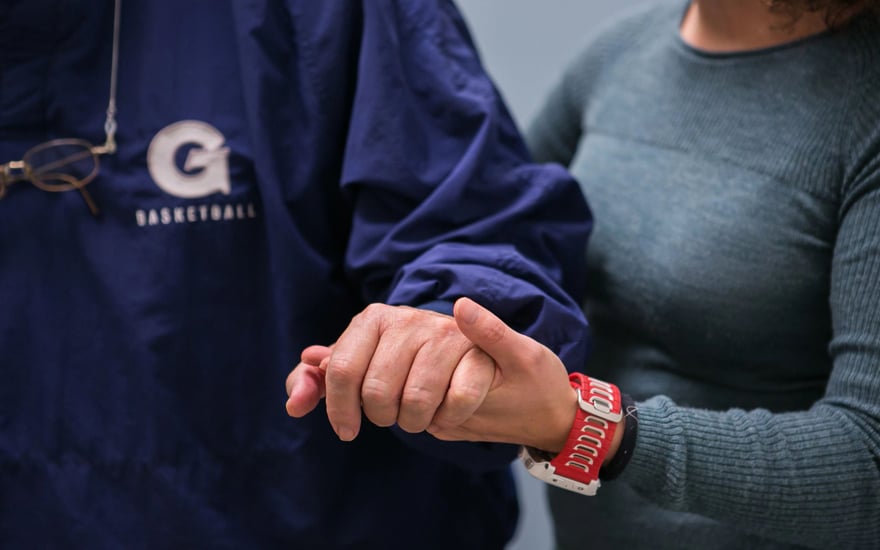
Do you avoid moving (a little or a lot) because you fear it will hurt? Does the fear of reinjury limit your activity? If so, you may be experiencing kinesiophobia. And you're not alone.
As many as 50%-70% of adults — not just athletes — experience this feeling after an injury, accident, or illness. Kinesiophobia can result from personal experience. It also can be learned by watching or mimicking the behaviors of others.
Fear is a natural response to danger or the potential threat of danger. It causes normal physical changes in the body, such as:
- Increased heart rate.
- Rapid breathing.
- Elevated startle "jump" response.
Fear also can cause anxiety — the emotion felt when we think bad things might happen. And anxiety can cause fear, resulting in a continuing feedback loop. Ultimately, when fear and anxiety affect how we move it’s known as fear avoidance.
People who fear moving can have decreased confidence in doing daily activities and may:
- Change their normal movement to feel safe. Moving in ways we are not meant to — and using muscles or joints the wrong way — can lead to new pain.
- Decide that it is just better not to move at all. An inactive lifestyle can increase your risk of developing heart disease, diabetes, and obesity.
While avoidance tactics may seem to help at first, they can lead to long-term problems if continued. Movement and regular physical activity are essential for our hearts, muscles, joints, lungs, mind, spirit, and overall health.
Help Is Available
Physical therapy plays a vital role in addressing the fear of movement. Physical therapists can identify any contributing factors and teach you how to move safely. They, and the physical therapist assistants they work with, can help you get past your fear of movement.
Physical therapists are movement experts. They improve quality of life through hands-on care, patient education, and prescribed movement.
What to Expect From Physical Therapy
Physical therapy aims to restore function so you can do the activities you need and love to do.
During your initial visit, your physical therapist may:
- Measure your fear of movement or reinjury. The Tampa Scale of Kinesiophobia or a questionnaire can help identify the reasons for your fear. There are a variety of possible causes.
- Evaluate your overall strength, endurance, and balance.
- Ask about your personal goals.
Your physical therapist will use this information to design a personalized treatment plan that may include:
- Gradual exposure to activities that do not cause harm.
- A strength, balance, and endurance exercise program paced for your specific needs.
- Virtual reality activity exposure.
- Adapted yoga.
- Aquatic exercises.
- Patient education. Your physical therapist can help you better understand how your body should move.
- Guiding you through activities so you can focus less on your fear and improve your ability to move.
- Assistance and guidance to help you set quality-of-life goals.
Your physical therapist also may recommend cognitive behavioral therapy. This treatment can help you address fear or anxiety.
Physical therapists use the latest evidence to address each person's needs, challenges, and goals to:
- Improve mobility.
- Manage pain and other conditions.
- Recover from and prevent injury and chronic disease.
Physical therapists and physical therapist assistants empower you to take part in your recovery. They work with each other, other health care providers, and community partners to ensure you receive the best care.
You can contact a physical therapist directly for an evaluation. To find a physical therapist in your area, visit Find a PT.
Let a physical therapist help restore your movement so you can regain your physical, mental, and social health. Choose more movement for better health.
Additional Resources
- 9 Things You Should Know About Pain
- Five Reasons to Choose Physical Therapy Early for Pain
- Sports Injuries and Emotions: How Physical Therapists Can Help with Both, Plus Tips for Athletes
- Patient Story: Physical Therapy Helps College Student Control Pain, Avoid Opioids
- Physical Therapy Guide to Pain


